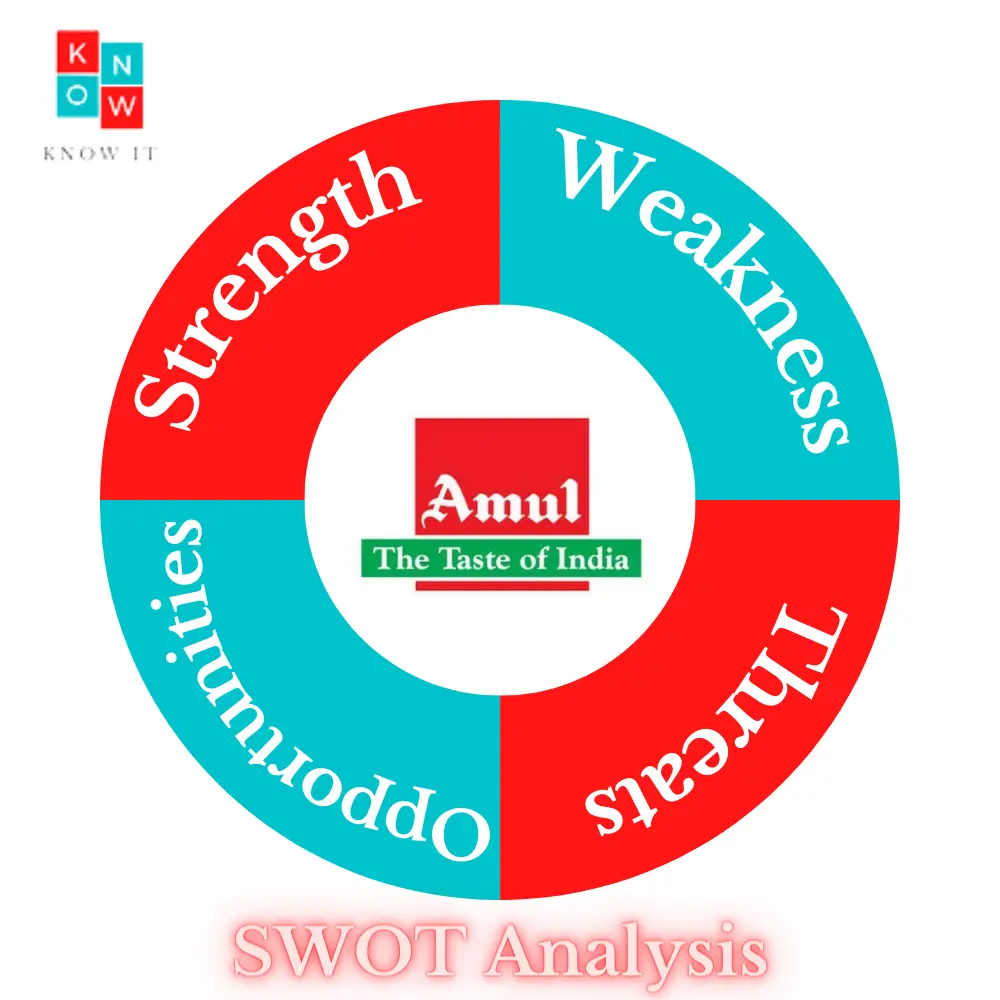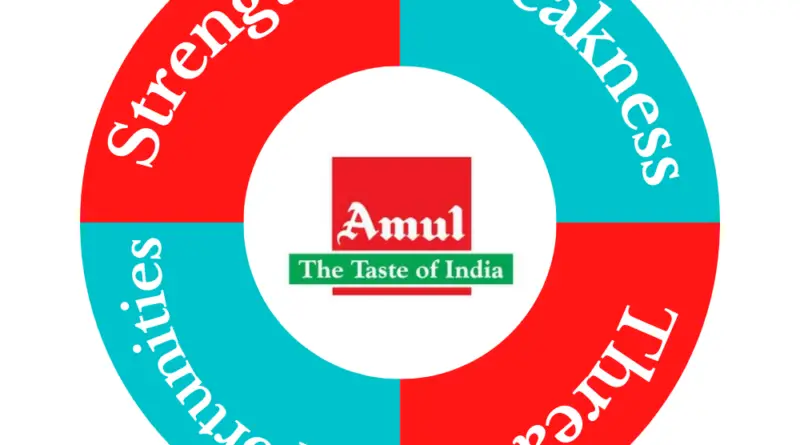Analyzing Amul’s Strengths, Weaknesses, Opportunities, and Threats: A Comprehensive SWOT Analysis
In this blog post, we will conduct a SWOT analysis of Amul, one of India’s leading dairy brands. A SWOT analysis is a strategic management tool that helps businesses assess their internal strengths and weaknesses, as well as external opportunities and threats. By examining Amul’s market position, product portfolio, and competitive landscape, we can gain valuable insights into the company’s current standing and future prospects.
SWOT Analysis of Amul
Strengths of Amul
Amul boasts several key strengths that have contributed to its success and established its strong market position. Firstly, the brand has a robust and extensive distribution network, ensuring that its products reach even the most remote areas of India. This wide reach has provided Amul with a significant advantage over its competitors.
Secondly, Amul’s diverse product portfolio is another strength. The brand offers a wide range of dairy products, including milk, butter, cheese, ice cream, and yogurt, catering to different consumer preferences. This versatility has helped Amul capture a larger market share and maintain customer loyalty.
Thirdly, Amul has successfully cultivated a strong brand image over the years. The brand is synonymous with quality, trust, and affordability. Amul’s consistent focus on delivering superior products at competitive prices has earned it a loyal customer base.

Weaknesses of Amul
Despite its strengths, Amul also faces certain weaknesses that need to be addressed. One of the main weaknesses is its limited presence in non-dairy segments. While Amul has diversified its product portfolio to some extent, it still heavily relies on dairy products. Expanding into non-dairy segments such as snacks or beverages could help Amul tap into new markets and increase its revenue streams.
Another weakness is Amul’s limited international presence. Although the brand has gained popularity within India, its global footprint is relatively small. To compete with international dairy brands, Amul needs to focus on expanding its reach beyond the domestic market and establishing a strong presence in key international markets.
Opportunities for Amul
Amul has several opportunities to capitalize on in the ever-evolving dairy industry. Firstly, the growing health consciousness among consumers presents an opportunity for Amul to introduce and promote healthier product variants. By leveraging its brand reputation and introducing products with reduced fat or sugar content, Amul can cater to the changing preferences of health-conscious consumers.
Secondly, the rise of e-commerce platforms provides Amul with an opportunity to strengthen its online presence and reach a wider customer base. By partnering with popular online retail platforms or launching its own e-commerce website, Amul can enhance its accessibility and convenience for customers.
Furthermore, Amul can explore potential collaborations or joint ventures with international dairy brands to expand its global presence. Strategic partnerships could help Amul gain access to new markets, technologies, and distribution channels, facilitating its growth and market expansion.
Threats to Amul
Amul faces various threats that need to be carefully monitored and addressed. One significant threat is the increasing competition from both domestic and international dairy brands. As the Indian dairy market becomes more competitive, Amul needs to continuously innovate and differentiate itself to maintain its market share.
Additionally, changing consumer preferences and dietary trends pose a threat to Amul. With the rise of veganism and plant-based alternatives, there is a risk that some consumers may shift away from traditional dairy products. Amul needs to adapt to these changing trends by exploring and investing in alternative dairy products to secure its position in the market.
Moreover, fluctuations in milk procurement prices can impact Amul’s profitability. As a cooperative, Amul depends on its farmer members for milk procurement. Any significant fluctuations in milk prices can affect the brand’s production costs and profitability.
Conclusion
Through this SWOT analysis, we have gained valuable insights into Amul’s strengths, weaknesses, opportunities, and threats. By leveraging its strong distribution network, diversifying its product portfolio, expanding internationally, capitalizing on emerging trends, and addressing potential threats, Amul can continue to thrive in the competitive dairy industry. With strategic planning and adaptation, Amul can further consolidate its position as a leading dairy brand in India and beyond.



